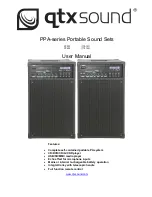
C-7
Cisco Security Appliance Command Line Configuration Guide
OL-12172-03
Appendix C Using the Command-Line Interface
Text Configuration Files
Automatic Text Entries
When you download a configuration to the security appliance, the security appliance inserts some lines
automatically. For example, the security appliance inserts lines for default settings or for the time the
configuration was modified. You do not need to enter these automatic entries when you create your text
file.
Line Order
For the most part, commands can be in any order in the file. However, some lines, such as ACEs, are
processed in the order they appear, and the order can affect the function of the access list. Other
commands might also have order requirements. For example, you must enter the
nameif
command for
an interface first because many subsequent commands use the name of the interface. Also, commands in
a command-specific configuration mode must directly follow the main command.
Commands Not Included in the Text Configuration
Some commands do not insert lines in the configuration. For example, a runtime command such as
show running-config
does not have a corresponding line in the text file.
Passwords
The login, enable, and user passwords are automatically encrypted before they are stored in the
configuration. For example, the encrypted form of the password “cisco” might look like
jMorNbK0514fadBh. You can copy the configuration passwords to another security appliance in their
encrypted form, but you cannot unencrypt the passwords yourself.
If you enter an unencrypted password in a text file, the security appliance does not automatically encrypt
them when you copy the configuration to the security appliance. The security appliance only encrypts
them when you save the running configuration from the command line using the
copy running-config
startup-config
or
write memory
command.
Multiple Security Context Files
For multiple security contexts, the entire configuration consists of multiple parts:
•
The security context configurations
•
The system configuration, which identifies basic settings for the security appliance, including a list
of contexts
•
The admin context, which provides network interfaces for the system configuration
The system configuration does not include any interfaces or network settings for itself. Rather, when
the system needs to access network resources (such as downloading the contexts from the server), it
uses a context that is designated as the admin context.
Each context is similar to a single context mode configuration. The system configuration differs from a
context configuration in that the system configuration includes system-only commands (such as a list of
all contexts) while other typical commands are not present (such as many interface parameters).
Summary of Contents for 500 Series
Page 38: ...Contents xxxviii Cisco Security Appliance Command Line Configuration Guide OL 12172 03 ...
Page 45: ...P A R T 1 Getting Started and General Information ...
Page 46: ......
Page 277: ...P A R T 2 Configuring the Firewall ...
Page 278: ......
Page 561: ...P A R T 3 Configuring VPN ...
Page 562: ......
Page 891: ...P A R T 4 System Administration ...
Page 892: ......
Page 975: ...P A R T 5 Reference ...
Page 976: ......
















































